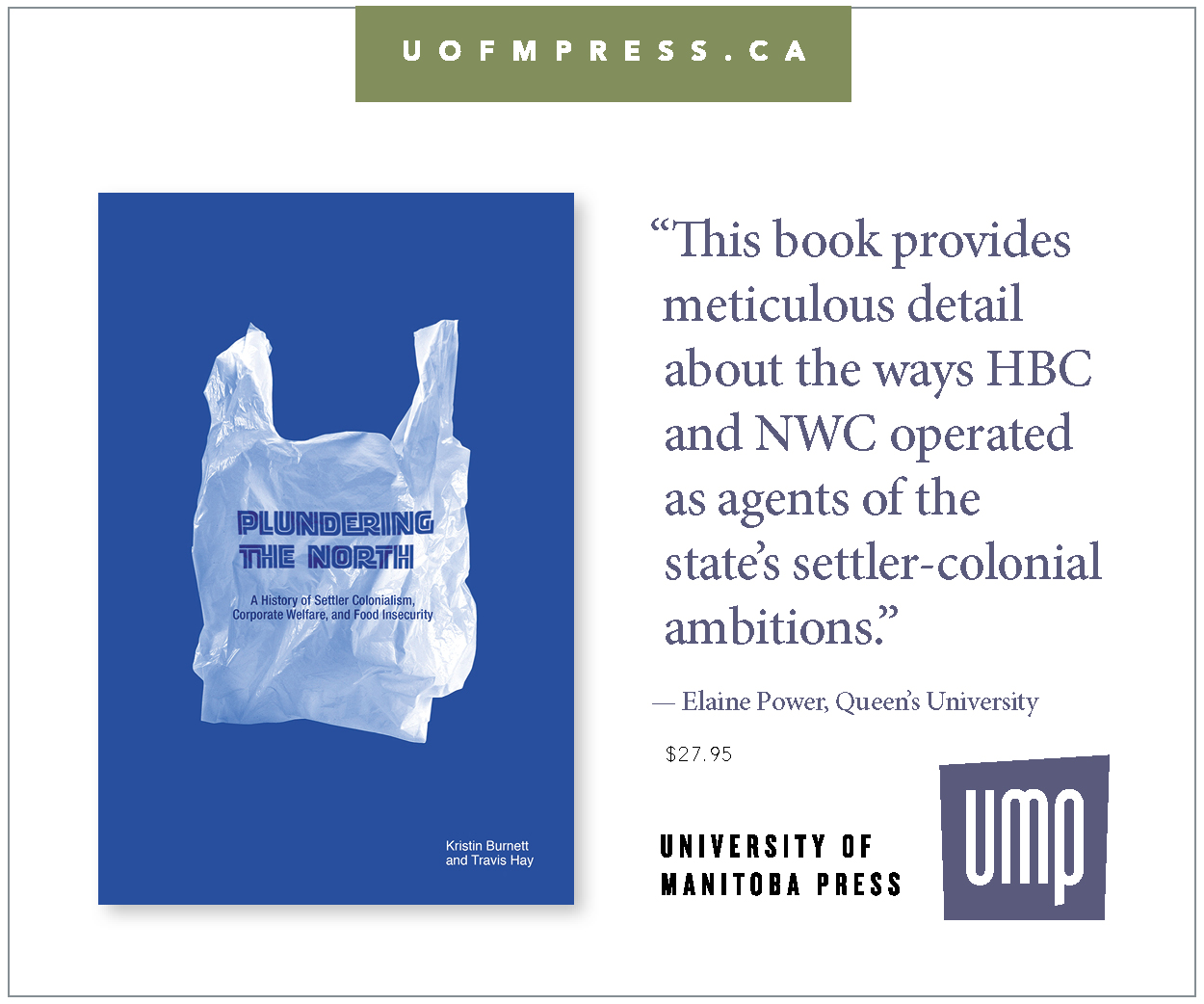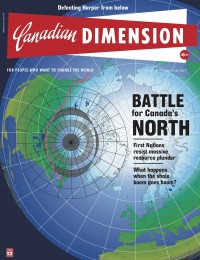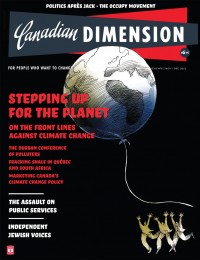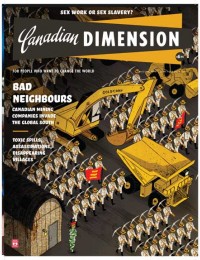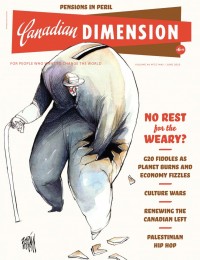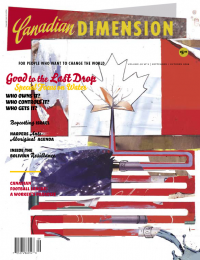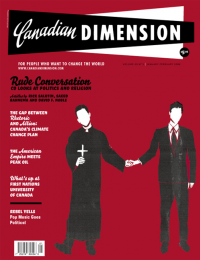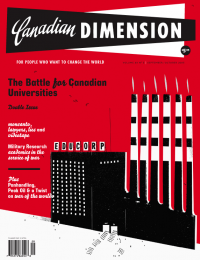The Heart of the Taku
For some reason it never drifts away, the Heart of the Taku? I suppose it is still there to this day. It’s a long time since I’ve seen it. –Elizabeth Nyman, Gagiwul.at: The Legacy of a Taku River Tlingit Clan
In 1957, the Consolidated Mining and Smelting Company, later known as Cominco, mothballed the last of its mines on the Taku River watershed in Northern British Columbia. The company town of Tulsequah was abandoned along with the mine, and the quiet of the wilderness returned to the remote, roadless valley. Today the Taku is best known as a salmon stream, with commercial and sport fisheries in both B.C. and Alaska, and also as an endangered river, popular with eco-tourists and adventurers. But before it was any of these things, the Taku was the traditional hunting grounds of the Taku River Tlingit First Nation (TRTFN).
TRTFN is a community of less than 500, most of whom live in or near the remote village of Atlin, B.C. No road connects Atlin to the Taku, and TRT members commonly reach their fish camps by bush plane. Jobs are scarce in the Atlin area, and the salmon are crucial to the local economy, for both the First Nation and the community at large. In addition, the Tlingit survive by hunting caribou and moose. Many have moved away to find work.
In 1987, Cominco and a junior mining partner, Redfern Resources, began diamond-drilling in the Taku Valley, with an eye to reopening and expanding the Tulsequah Chief mine. In 1998, the B.C. government awarded Redfern, by then the sole owner of the property, a Project Approval Certificate for a mine on the Tulsequah River, a few kilometres upstream from its confluence with the Taku. As the result of a court challenge by the TRTFN and environmental groups, the B.C. Supreme Court quashed the PAC in 2002.
First Nations National Chief Phil Fontaine Hails Supreme Court Ruling
The years of litigation came to a head on November 18, 2004, when the Supreme Court of Canada handed down its ruling in the case. The SC found that the Crown’s duty to “act honourably” in its dealings with Aboriginal people is enshrined in Section 35 of the Constitution Act, 1982. It applies to all governments in Canada in all their relations with First Nations, with or without a settled land claim or treaty. However, it also found that the Government of British Columbia had consulted adequately with the TRT throughout the permitting process for the Tulsequah Chief project. As Redfern president Terry Chandler says, “The highest court in the land recently validated that process and established that the EA process and Redfern and the government had met all of their obligations and that the approval decision had been reached through a fair process. As a result, I am confident that the Tulsequah project can be one of the most responsible and least impactive mining projects in the province of B.C.”
Hailed by Assembly of First Nations National Chief Phil Fontaine as “a constructive step towards the recognition of First Nations’ claims to land and resources,” the SC decision affirms the obligation of governments to consult with First Nations before approving development on their traditional territory. But was the ruling a victory for the Taku River Tlingit? “Not so far,” says TRT spokesperson John Ward. “It’s starting to feel like the government wants to kick us in the pants for it. It seems like they want to get revenge on us for going to court.”
The Campbell Liberals: Mining’s Strongest Proponents
On January 5, 2005, the Department of Fisheries and Oceans released a draft screening report for public consultation on the Tulsequah Chief project, including the 160-kilometre road between the proposed mine and Atlin, B.C. Although the DFO made no attempt to hold public meetings, environmental groups and the Town of Juneau organized events in Vancouver, Victoria, Whitehorse and Juneau. The draft report concluded that the project “is not likely to cause significant environmental effects.”
But according to NDP critic Peter Stoffer, “115 substantive outstanding, environmental effects” previously identified by the DFO have still not been addressed. The 115 items in question were laid out in a June, 2002 letter from DFO to Redfern, and included such serious matters as damage to salmon stocks from mine effluent, the possible loss of the East Atlin Caribou herd and the extreme unlikelihood that the road will ever be decommissioned, as called for in the management plan.
“[DFO] have had no signal from the province that they’re willing to sit down and work this out,” says John Ward. “Why are they suddenly going ahead and authorizing this road across our territory?”
Why did the DFO change its position? According to David McKinnon of the Transboundary Watershed Alliance, politics trumped science when the Government of British Columbia joined forces with Redfern to lobby the feds. “B.C. are an assessor of mining applications,” says McKinnon, “but in this case they’re also a proponent.”
Indeed, although the Redfern PAC was granted under an NDP government, it is Gordon Campbell’s Liberals who have turned out to be mining’s greatest proponents in the province. According to a 2002 study produced by Mining Watch and the Pembina Institute, the Campbell government has boosted subsidies to mining companies so high that now 65 cents of every dollar spent on mining in the province comes out of either provincial or federal taxes. In July, 2004, the province chopped nearly 15,000 hectares out of the South Chilcotin Mountains Park and handed it to explorations companies. Small wonder the Tlingit find the provincial government unsympathetic to their concerns.
“B.C. government has always been hostile towards us,” says Ward. “Through all these court cases and all of it, they’ve taken a very hostile attitude. We’re trying to take a responsible attitude, to get our land plan in place and to deal with the government in good faith, but B.C. makes it hard.”
Representatives of the B.C. government and Redfern met with the deputy minister of fisheries and oceans on May 31, 2004, to discuss what Redfern felt were unacceptable delays in the permitting process. As a result of this meeting, the DFO was persuaded to drop its negative assessment of the Redfern management plan.
“We’re talking about what most people would believe is supposed to be a neutral assessment, based on science,” says McKinnon. “But when you look at the access the company has [to government officials] at a time when DFO is simply refusing to talk to anyone else about this, I think it’s a clear indication of bias in the process.” He points out that even the mayor of Juneau, the state capital of Alaska and the nearest downstream community, hasn’t been able to get a meeting with DFO.
Alaska state senator Kim Elton made the same complaint. “It’s sometimes like talking to a pillow.” Two letters from Senator Elton on the subject were addressed to Minister of Foreign Affairs Pierre Pettigrew, and carbon copied to the various government agencies involved. No-one replied.
Allegations of a too-cozy relationship between Redfern and the B.C. government are not new. In the four days prior to the granting of its Project Acceptance Certificate, Redfern’s stock experienced some of its heaviest trading days, and it’s value jumped considerably. According to then-B.C. NDP leader Joy MacPhail, the same thing had happened on at least one other occasion: “This is a stock that often didn’t trade at all, but would suddenly spike just prior to a government decision.”
Pollution Controversies
Gilbert Quock never planned to get politically involved in the Tulsequah Chief mine. “I did support the idea when I first heard of it,” says Redfern’s community-liaison officer. “That’s what I do, I’ve been in the road-building and development business all my life, so basically, when this project came along, I supported it. But I thought I’d keep my nose out of it, because I thought, you know, I’d let [TRT leadership] take care of it.” Quock is a TRT member and former Wolf Clan councillor who makes his home in nearby Whitehorse, although he still has family in Atlin. He believes that most of TRTFN ’s members, like himself, support responsible development. “[Tulsequah Chief] is a tremendous opportunity, and the majority of Tlingits that I know of consider that this is a responsible development.”
Through the years of studies, consultation and litigation over the mine, he says, “[The controversy] never seemed to go away. So, I thought to myself, okay, I’m going to go down and I’m going to see for myself what kind of pollution flows out of this mine.” He took a job working on the water-treatment plant at the Tulsequah site, where Redfern is working to mitigate acid-mine drainage that’s been flowing into the river since Cominco abandoned the mine. “And I seen for myself it’s total bullshit what I’ve been hearing over the past few years, that there’s a big torrent of pollution coming out of there…. You know, there is pollution coming out of the ground, but the company is doing what it can to take care of the problem.”
According to the Environmental Mining Council of B.C., acid drainage “is the biggest environmental threat from mining in British Columbia.” In 2000, Environment Canada ordered Redfern to address the ongoing problem of acid drainage at the Tulsequah site. A 1995 study had found that acid leeching from old mine tailings was “acutely toxic” to fish. In 2003, a followup report concluded that “none of the measures undertaken by Redfern significantly reduced the acutely lethal toxicity.” According to Redfern, the only way to deal with the pollution is to dig out the offending material and haul it away: in other words, to mine it. They have steadfastly insisted that this can only be done when the mine is in operation and the haul road in service. An earlier plan to barge the ore to tidewater, as was done in the fifties, was deemed “neither technically nor economically feasible.”
The British Columbia Environmental Assessment Office could hardly be more supportive of Redfern’s position; according to its 2001 proposal update, the solution to acid drainage at the site “is to mine 2500 tonnes of ore per day, and to construct a 160 kilometre road from the site to Atlin to haul ore concentrate.”
“What Kind of Planning is That?”
In November, 2004, the Taku Access Independent Science Panel released its report on the management plan for the new mining road between Tulsequah and Atlin. Commissioned by the Taku River Tlingit First Nation, the report concludes that “all proposed adaptive management procedures are of minor utility or none at all. They will not prevent ecologically unacceptable events.” Redfern’s management plan failed in all of the areas TRTFN had identified as of concern: monitoring and mitigation of effects on wildlife and on Aboriginal culture, the control of access, and the eventual decommissioning of the road.
“It’s not a plan,” says Ward. “It’s ridiculous. It’s just not good enough in terms of sustainability, or protection for wildlife or Tlingit cultural practices…. They didn’t have to change any of their regulatory regimes to accommodate us, to make a sustainable plan. It’s all there. But this plan–it’s just bogus.” Ward objects to the road being proposed at all in the absence of a land-claims settlement. “The lack of progress in resolving land claims is a major problem for the Taku River Tlingit,” he says. “We were discussing land planning long before Mr. Terry Chandler showed up. But how can you push a road through in the middle of planning? What kind of planning is that?”
The decommissioning of the mining road at the end of the mine’s projected eight-year life is key to Redfern’s management plan. The potential for damage to wildlife habitat from public roads is one of the few undisputed facts in the case. But according to the study, “once the road is constructed it will be essentially impossible to stop ancillary development.” Any number of individuals and corporations are likely to want access to the road once it’s built: loggers, placer miners, other hard-rock mines, not to mention hunters and fishers, whether for sport, subsistence, or profit. “Who knows,” says Ward, “maybe my people would want to keep that road, once it was there.” In fact, under B.C. law, access to the road cannot be denied to any user with an industrial property in the area. This is not a theoretical concern; Canarc Resources has announced a major gold deposit on the Tulsequah, close to the Redfern site, with a projected mine life of 20 years.
Whose Experts?
“It is not unusual to find qualified individuals who do not agree with either the methodology, duration, or interpretation of any given scientific study, even where a large number of similarlyqualified individuals have collaborated in a review of the study and generally agree on the findings.” –Terry Chandler, President, Redfern Resources
Chandler’s response to the allegation that the road will never be decommissioned according to plan is that all future projects will have to undergo the same environmental screening process as Tulsequah Chief. He also challenges the validity of the Taku Access panel’s findings.
“Interestingly,” he says, “the authors of the plan were not invited [to participate in the TAISP report], virtually none of the government agencies who had participated in the project review were present and most of the independent participants had no prior involvement with the past seven years of studies.” The panel was chaired by Daniel Botkin, professor emeritus of ecology, evolution and marine biology, UC-Santa Barbara, one of the world’s preeminent ecologists, and was weighty with expertise from government, industry and academe.
The Taku Access panel’s report echoes much of the criticism that has been leveled at the Tulsequah Chief project from the beginning. In 1997, Whitehorse ecologist Alejandro Frid studied the proposal for the Northwest Institute for Bioregional Studies. He commented on the comprehensive nature of the project’s environmental work, but in the end found that, since it lacked any workable benchmarks by which to measure effects on ecosystems, it was “design-less” and essentially useless.
In an e-mail response, Chandler points out, “other independent consultants have also described the wildlife studies for the Tulsequah project as the most comprehensive” ever completed in the province. “The studies were completed to meet the specified design requirements of the Wildlife management experts in government,” and, in the end, Frid’s criticism “is more a criticism of wildlife management practices in general and not specific to the Tulsequah Project.”
In fact, the NIBS report makes this same point. In his conclusion, Frid says, “I don’t believe [Redfern’s study] deserves to be singled out by my criticisms. Unfortunately, most impact studies done by consulting companies or government agencies lack proper experimental designs, and are equally flawed–but, there is no other watershed of that size left un-roaded in B.C., and that watershed has a more or less un-wrecked component of carnivores–the most susceptible animal group to road-related impacts.”
In 2002, Yukon biologist Bob Hayes, in a study for the Transboundary Watershed Alliance, reached the same conclusion as Frid. He found Redfern’s wildlife data and study model to be “fundamentally flawed” and “inadequate to detect and mitigate negative effects of the project on the large mammal community” in the Tulsequah area. He went on to say the study’s design “lacks essential ingredients of contemporary environmental assessment including: testable predictions about effects on wildlife, control areas, environmental monitoring, and the use of risk models and power analysis to set effect sizes.”
In response to the large body of scientific opinion critical of the Redfern studies, Chandler says, “The goals of the environmental organizations are self-generated and have no public mandate.” He goes on to say, “The stated opposition to development within this area clearly presents a bias on the part of the NGOs to find fault with any positive conclusions to the assessment process and to find and present whatever contradictory opinions they can assemble.”
So, does Redfern allege that a series of scientists, including not only Frid, Hayes and the seven members of the Independent Science Panel, but also Dr. Francois Messier, Dr. David Shackleton, and Dr. Tony Pearse–all of whom have made similar findings–have placed their professional and academic reputations in jeopardy by advancing questionable science for ideological reasons?
“I wouldn’t say that,” says Gilbert Quock. “But everybody sees things their own way. They don’t want development in the Taku Watershed period, whether its responsible or not. And if you believe in something you will stake your reputation on it, I suppose. I’m sure they believe that what they said is right. But they put it in their context. Whereas if you get someone that believes in mining, they’ll write it their way.”
The Adaptive Management Plan for the Protection of Wildlife During the Construction, Operation, and Decommissioning of the Tulsequah Chief Mine Project is a hefty, 46-page document compiled by AXYS Environmental Consulting. It is difficult to test Terry Chandler’s assertion that the authors of his management plan are “similarly qualified” to those who have found it “of minor utility,” “design-less,” or “fundamentally flawed.” While the Taku Access panel report lists all of its contributors, complete with resumes, the AXYS plan doesn’t.
According to the “Advantage AXYS” page, “Our scientists and field technologists are of the highest caliber–experienced, innovative and pragmatic.” The company lists an impressive clientele in both government and industry, including almost every major oil company in Canada. There are job openings at AXYS today. If you want to be a Senior Environmental Planner, all you need is a “BSc or MSc in a relevant discipline and bring 3-7 years of experience in environmental consulting or in the energy, resource development or infrastructure sectors.” Senior biologists must have at minimum a Bachelor of Science degree, and seven years experience “related to the energy industry.” If there is one scientist at AXYS who is “similarly qualified” to Botkin, Shackleton, or Pearse, the fact is not apparent from a study of the corporate profile. This is not to suggest that AXYS doesn’t provide the expertise required by its clients; as the web page points out, “Planning staff are a strong bridge between industry and regulators. We facilitate the assessment and approvals process drawing on over 50 years of collective experience.”
The problems identified by at least a dozen scientists are not unique to the Taku watershed, nor to the Redfern application. According to Frid, they represent the failure of British Columbia to update its environmental review criteria to reflect current practices in wildlife studies. He points to “…some good impact studies being done–look at Fiona Schmiegelow’s work on the Calling Lake Study in Alberta, for instance–that have a high standard of ecological science and involve university professors and grad students.” Academic participation in field research should be “the minimum standard,” says Frid, because industry scientists are less likely to be up to date on advancements in scientific procedure.
An Economic Opportunity?
Wilderness: n. desert. Uncultivated and uninhabited tract. –The Concise Oxford Dictionary
The Taku watershed is anything but an untouched wilderness. Mining and explorations have been going on there for more than a century. Fifty years ago, two heavy industrial mines were in operation in the area, and a whole company town sat near the Tulsequah River. Aside from these things, the Taku was never a wilderness to the Tlingit, who lived, hunted and fished there long before contact. The question for the community is not whether the Taku represents an economic opportunity, but how best to make use of the area for sustained economic benefit.
“As long as the Tlingits are included and their rights are looked after,” says Quock, “I think this mine or any other responsible development will make a huge difference to the Tlingits, as far as opportunities for work and bettering themselves.”
Quock took on the job of community liaison officer for Redfern because it’s something he believes in; he sees a need for change in Atlin. “I don’t think it’s a good state of affairs when the major employer is the band office. I don’t see how you could see that as being a stable society. When the people who are your leaders are your employers, and they’re in charge of the purse strings, they have pretty tight control over everybody and everything.”
Responsible development would mean jobs for the Tlingit, says Quock. “I think when the mine site’s in production, there’ll be around 400 people working down there, so any Tlingit person that wants a job will be working. And it’s not only in the mine. A lot of them will be looking at the contracting opportunities.”
Ward sees no guarantee of Tlingit jobs at the mine. “We can go down and apply like anyone else,” he says. “That doesn’t mean we’ll get jobs.” Like Quock, Ward speaks of responsible development: the disagreement lies in whether the Redfern project meets the definition of responsible. “We’re not anti-mining,” says Ward. “But my people have been exercising our rights here for generations. And we’re supposed to trade that right away for what? For the right to dig in the ground for gold? Taku River Tlingit have always been orderly about this, we’ve followed proper process. We have a governing body, a constitution, we follow those. It’s not like we’re willynilly. People think we’re being led by environmental groups, but that’s wrong. We’re acting for our people, for their future.”
Who Supports the Mine?
“We respect each other, I’m sure,” says Gilbert Quock. “But it’s not the best: I mean, I support Redfern, and John Ward doesn’t, so … I’m related to John, actually. I’m sure we do respect each other, but as far as supporting each other, I don’t think we do that. I have my point of view, and they have theirs.”
One place where Ward and Quock differ widely is in their estimates of community support for the mine. John Ward believes that most of the Tlingit who live in Atlin are opposed to the Redfern proposal. “Part of it is, some of us live at home, here in Atlin. We have to live with the consequences of our decision. Others who don’t live here don’t have the same reason for caution.”
But Quock estimates 70 per cent of Tlingit people in Atlin support the mine. “There’s a lot of people that are very much in favour. I mean, why not? It’s what a lot of people do, they run equipment and do this type of work. It’s fine and dandy to talk about tourism and river rafting and all that, but, I mean, that’s been going on for years, and the number of Tlingits that have taken advantage of that or have been employed by it is pretty near zip. For the unskilled Native worker, to be working in tourism and getting base rate, that’s not their ideal work.”
The Duty to Consult Is Ongoing
Whatever the controversy within the Tlingit community, the Supreme Court was clear that the TRTFN can’t be shut out of planning on their traditional territory. Chandler’s assertion that the SC found “Redfern and the government had met all of their obligations” falls short of the facts. While it’s true that the court’s decision acknowledged the consultation that has already taken place, it made it clear that the Crown’s duty to consult is ongoing. The judgment states: “Issuance of a project approval certificate does not constitute a comprehensive ‘go-ahead’ for all aspects of a project,” and acknowledges that “the potential for negative derivative impacts on the TRTFN ’s claim is high.” It also calls for “good faith consultation and willingness on the part of the Crown to make changes based on information that emerges during the process.”
Geoff Regan, Canada’s minister of fisheries and oceans, did not respond to Canadian Dimension’s request for clarification of his position on the Tulsequah Chief project. However, it appears as though officials in the federal and provincial governments have made up their minds that the mine will go ahead, with or without the approval of the Taku River Tlingit. The speed with which the DFO draft screening report followed the Supreme Court decision makes it hard to believe the document was prepared with the judgement in mind.
The Taku River Tlingit don’t plan to sit back and let the Tulsequah Chief Mine or any other development happen on their traditional territory without involving the First Nation. Aboriginal communities may not always speak with one voice, but that doesn’t mean their voices can be ignored. “The only way to create certainty for everyone is for government and industry to pull their heads out of the sand and recognize that First Nations aren’t going away,” says John Ward. “We will never be severed from our land, and this decision doesn’t change that. The Taku River Tlingit Nation will continue to be the stewards of our Territory, like we always have been.”
Al Pope is a journalist and author who lives near Whitehorse. Al is the newest member of CD’s Editorial Collective. His first novel, Bad Latitudes, is published by Turnstone Press.
This article appeared in the March/April 2005 issue of Canadian Dimension .


